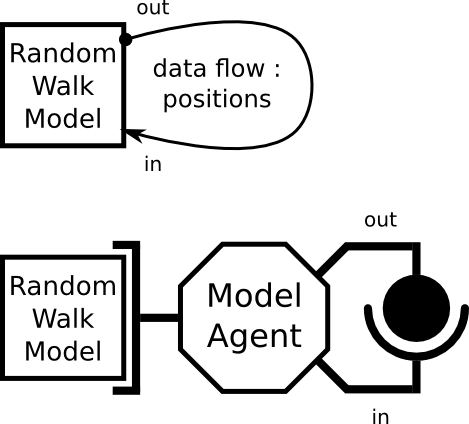In this tutorial, we present the linkage between all the entities (agents and artefact) in order to run the simulation.


/**
* In this example, we take only one model and its simulator. We couple the
* input port of the model with its own output port. This way, we show that the
* AA4MM framework can be used with a single model and its simulator.<br>
* This model used is a simple random walk. Each agent choose randomly the
* direction it is going to take.
*
* @author Julien Siebert
* @since Darjeeling
*/
public class TestRandomWalk {
/**
* @param args
*/
public static void main(String[] args) {
// create the agent model
RandomWalkModelAgent agtRandomWalk = new RandomWalkModelAgent();
// create the model artifact and link it with the agent
RandomWalkModelArtefact modRandomWalk = new RandomWalkModelArtefact(40,
40);
// link agent and model artifact
agtRandomWalk.setModelArtefact(modRandomWalk);
// create the coupling artifacts and link them with the agent
IPCA_WalkerPositions tp_ipca = new IPCA_WalkerPositions(
TurtlePositions.class, "turtle_positions_ipca");
OPCA_WalkerPositions tp_opca = new OPCA_WalkerPositions(
TurtlePositions.class, "turtle_positions_opca");
// link
agtRandomWalk.addInputCouplingArtefactPort(tp_ipca);
agtRandomWalk.addOutputCouplingArtefactPort(tp_opca);
// initialize, post ouptuData and execute the model
agtRandomWalk.initModel();
agtRandomWalk.postOutputData();
agtRandomWalk.executeModel();
}
}